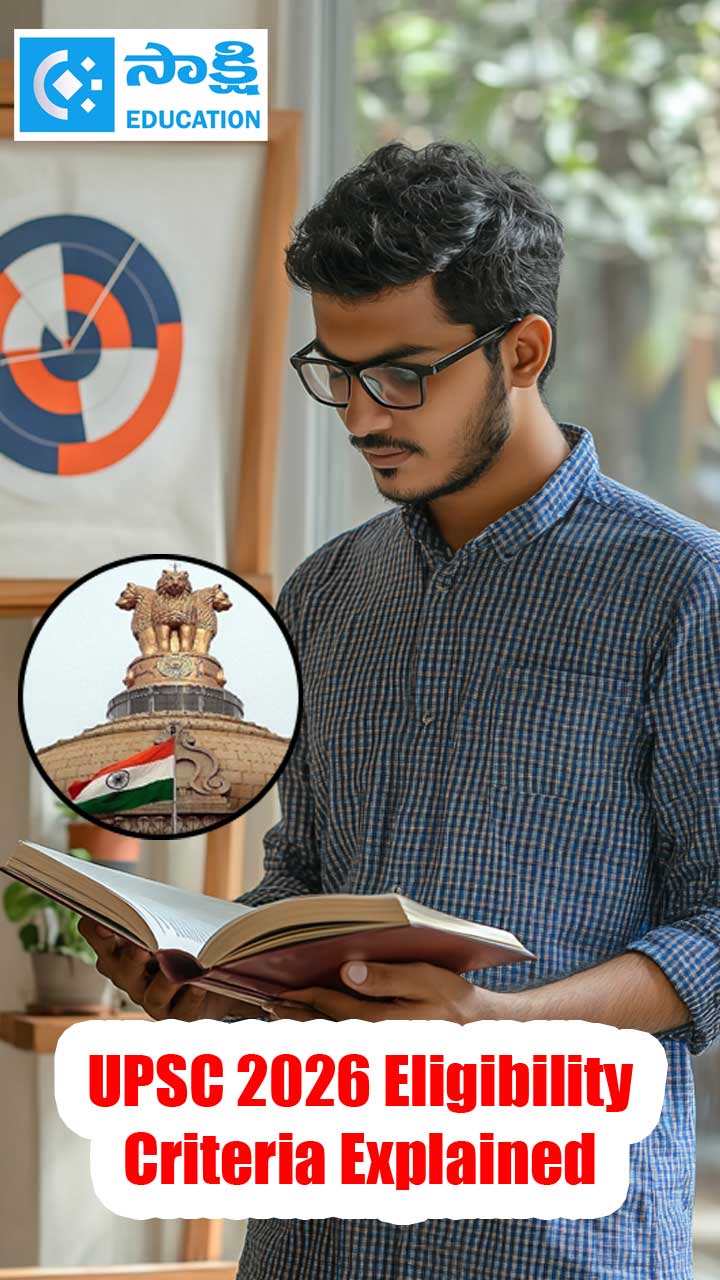The Movement for the Formation of Telangana State
Sakshi Education
Key Points:
- After Hyderabad merger with India, Hyderabad state became a democratic state in 1952 and Burgula Ramakrishna Rao became its first elected Chief Minster.
- Andhra region was separated from Madras Presidency in 1953 and Tanguturi Prakasam became its Chief Minister.
- On the initiative of the Union Government, the leaders of both sides met in Delhi and reached what was called “Gentlemen’s Agreement” on 20th February 1956. The signatories to the agreement were B. Gopala Reddy, N. Sanjeeva Reddy, G. Latchanna, A. Satyanarayana Raju from Andhra and B. Ramakrishna Rao, M. Chenna Reddy, J. V. Narsing Rao and K. V. Ranga Reddy from Telangana.
- This paved the way for the merger of the two states though conditional and subject to satisfaction of Telangana people. Thus, the new state of Andhra Pradesh with its capital in Hyderabad was formed.
- Around the same time, several leaders from Telangana came together to form a forum called Telangana Praja Samithi to work for the formation of a separate state, later took the shape of a new political party. The central government held long talks and came up with an Eight Point Plan which basically consisted of setting up several committees.
- In response to the Telangana agitation, a counter movement started in 1972 in the Seemandhra regions called “Jai Andhra Movement” demanding not only greater development of the coastal districts but also the removal of Mulki rules relating to domicile status.
- In addition to uneven development, the people of Telangana also felt that they were being culturally discriminated against. After the merger, the language and culture of Coastal Andhra was promoted as the ideal language and culture and those of Telangana were treated as being backward.
- A Telangana Information Trust was set up in 1989 by the intelligentsia to bring out information on injustices done to Telangana. On November 1, 1996, Telangana Vidroham meeting was organized in Warangal by a group of intellectuals. This gave rise to several popular meetings leading to the formation of several organisations for demanding the formation of Telangana state.
- Many organizational experiments like Telangana Jana Parishad, Telangana Mahasabha, Telangana Janasabha, and Telangana Aikya Vedika were tried out with political enthusiasm and spirit of activism but no political party emerged. Telangana Rashtra Samiti was formed in April 2001.
- K. Chandrashekar Rao, the leader of Telangana Rashtra Samiti, announced an indefinite fast to begin on 29th November 2009 at Siddipet. He was arrested and lodged in a jail even before he started his fast. He continued the fast in Khammam Jail and subsequently in hospital too.
- The Congress Core Committee heard the presentations from Andhra side and Telangana side and finally took a decision in favour of bifurcation. Accordingly, the bill was passed in Parliament bifurcating the State of Andhra Pradesh with June 2, 2014 as the appointed day.
Key words:
- Gentleman’s Agreement: The leaders of both sides met in Delhi and reached what was called “Gentlemen’s Agreement” on 20th February 1956. They basically agreed on 14 points. Thus, the new state of Andhra Pradesh with its capital in Hyderabad was formed.
- Joint Action Committee (JAC): In order to unify the people, all parties and organizations came together to form Telangana Joint Action Committee. Under its leadership, six major agitations were launched: Non-cooperation Movement, Million March, Sakala Janula Samme (forty two day general strike), Sagara Haram (human chain around Hussain Sagar Lake in Hyderabad), Sansad Yatra (March to the Parliament) and Chalo Assembly.
- Dhoom - Dhams: Dhoom - Dhams (public song and dance programmes), in garjanas (massive public meetings to proclaim the demands), padayatras (marches). The traditional Bonalu (offering to deities), drawing rangoli, was also invoked to express the popular Telangana demand.
- The Telangana Rashtra Samithi: Telangana Jana Parishad, Telangana Mahasabha, Telangana Janasabha, and Telangana Aikya Vedika were tried out with political enthusiasm and spirit of activism but no political party emerged. It was in this context that Telangana Rashtra Samithi was formed in April 2001.
Essay Questions
1. Describe the main features of Gentleman’s Agreement. How did this become a point of distrust between the regions?On the initiative of the Union Government, the leaders of both sides met in Delhi and reached what was called “Gentlemen’s Agreement” on 20th February 1956. They basically agreed on 14 points. This paved the way for the merger of the two states though conditional and subject to satisfaction of Telangana people. Thus, the new state of Andhra Pradesh with its capital in Hyderabad was formed.
The most important points in the agreement were:
- Expenditure on Administration was to be borne proportionately by the two regions and surplus revenue from Telangana region would be spent only for the development of Telangana.
- The existing educational facilities in Telangana would be reserved for the students from the region only.
- It was agreed to continue the Mulki rules under which only those with a minimum of 12 years of residence in Telangana were eligible for jobs and admission to educational institutions in Telangana.
- It was agreed to set up a Regional Council, a statutory body consisting of 20 members from the Legislative Assembly to oversee the needs and development of Telangana.
- Sale of agricultural land in Telangana would be controlled by the Regional Council
- The Andhra Pradesh ministry will consist of 40 percent members from Telangana and 60% from Andhra.
- If the Chief Minster was from Andhra, the Deputy Chief Minister would be from Telangana and vice versa.
2) “Diversity of people living in Telangana has historical, social and cultural context”. Justify the statement
- In addition to uneven development, the people of Telangana also felt that they were being culturally discriminated against.
- After the merger, the language and culture of Coastal Andhra was promoted as the ideal language and culture and those of Telangana were treated as being backward.
- The history, culture and leaders of Telangana were not adequately represented in the school textbooks. The folk deities and festivals of Telangana were being ignored.
- The films too depicted the people of Telangana as backward and crude.
- Sri Krishna Committee, for example, observed, “There is little doubt that the culture industry in Andhra Pradesh at present is dominated by the Coastal Andhra side as they own much of the film industry and other means of mass communication such as the print and audio-visual media.
- The domination of the film industry by Coastal Andhra businessmen/film makers popularized the Delta landscape with its green paddy fields as the ubiquitous background for most movies produced by them.”- Sri Krishna Committee report.
3) What have been the differences in access to water, agriculture, education and employment in the two regions?
- The poor farmers of dry lands faced the limitations of agricultural production with little and depleting water resources.
- Many traditional service castes like cloth washers and nomadic communities too felt the pressure of declining demand for their services and loss of livelihood.
- The farmers faced a steep hike in the prices of inputs like fertilizers, pesticides, power etc, and competition from cheap imported agricultural products.
- In Telangana, the depletion of ground water resources further intensified the crises as farmers had made huge investments in boring deeper wells.
- The total number of colleges in Telangana were 159 and if Hyderabad is excluded only 116 colleges for the youth. The grant for college education was about Rs. 93 cores in Telangana.
- The people of Telangana felt that the development was very uneven; its real benefits were going to other regions of the state.
- The youth also felt that most of the new employment opportunities created in the state were being cornered by people of the other regions.
4) How do you evaluate the various modes of mobilisation methods used in Telangana state formation?
- In order to unify the people, all parties and organizations came together to form Telangana Joint Action Committee.
- Under its leadership, six major agitations were launched:
- Non – cooperation Movement,
- Million March,
- Sakala Janula Samme – forty two day general strike,
- Sagara Haram (human chain around Hussain Sagar lake in Hyderabad),
- Sansad Yatra (March to the Parliament) and
- Chalo Assembly.
5) Describe the different roles taken up by JACs and Political parties in the formation of Telangana state? Do you think JAC’s created platform across political ideologies?
- Students formed a Joint Action Committee (JAC), and then the flings of JACs spread to all organizations springing up Hundreds of JACs in Telangana.
- A Telangana Information Trust was set up in 1989 by the intelligentsia to bring out information on injustices done to Telangana. On November 1, 1996, Telangana Vidroham meeting was organized in Warangal by a group of intellectuals.
- Telangana Jana Sabha (1997) and Telangana Mahasabha (1997) facilitated the merger of the movements of the weaker sections with movement for the state.
- Telangana employees including teachers, Non-Gazetted and Gazetted Officers formed their organizations. The Telangana intelligentsia came together to hold a seminar in Osmania University in 1997 and helped to conceptualise the issues from various angles.
- The employees, students, writers and cultural activists began holding seminars, lectures, meetings, dhoom - dhams and so on. The upsurge produced new cultural activists and their shows became a must in any meeting in Telangana.
- Joint Action Committees (JACs) spread to Kakatiya University, and then to Palamur, Satavahana, and Mahatma Gandhi Universities of Telangana.
- Then, the Employees JACs, Lawyers JACs, JACs of caste or communities and the District level JACs sprang up.
- The Congress Core Committee heard the presentations from Andhra side and Telangana side and finally took a decision in favour of bifurcation.
- In the parliament, the bill was supported by BJP, BSP, CPI and the other opposition parties.
- Accordingly, the bill was passed in Parliament bifurcating the State of Andhra Pradesh with June 2, 2014 as the appointed day.
Objective Questions
1) Telangana Rashtra Samithi was formed in ______________. ( A )
A) April 2001.
B) April 2011.
C) April 2012.
D) April 2015.
A) April 2001.
B) April 2011.
C) April 2012.
D) April 2015.
2) In response to the Telangana agitation, a counter movement started in 1972 in the Seemandhra regions called ________________________. ( A )
A) Jai Andhra Movement
B) Jai Telangana Movement
C) Jai Seemandhra Movement
D) Jai Rayalaseema Movement
A) Jai Andhra Movement
B) Jai Telangana Movement
C) Jai Seemandhra Movement
D) Jai Rayalaseema Movement
3) A six point formula was formulated by the Central Government in___________. ( A )
A) 1973
B) 1976
C) 1999
D) 2000
A) 1973
B) 1976
C) 1999
D) 2000
4) The signatories to the “Gentlemen’s Agreement were__________. ( D )
A) B. Gopala Reddy, N. SanjeevaReddy, J. V. Narsing Rao
B) B. Ramakrishna Rao, M. Chenna Reddy, K. V. Ranga Reddy
C) G. Latchanna, A. Satyanarayana Raju, J. V. Narsinga Rao
D) B. Gopala Reddy, N. Sanjeeva Reddy, G. Latchanna, A. S. Raju, B. Ramakrishna Rao,
M. Chenna Reddy, J. V. Narsing Rao and K. V. Ranga Reddy
A) B. Gopala Reddy, N. SanjeevaReddy, J. V. Narsing Rao
B) B. Ramakrishna Rao, M. Chenna Reddy, K. V. Ranga Reddy
C) G. Latchanna, A. Satyanarayana Raju, J. V. Narsinga Rao
D) B. Gopala Reddy, N. Sanjeeva Reddy, G. Latchanna, A. S. Raju, B. Ramakrishna Rao,
M. Chenna Reddy, J. V. Narsing Rao and K. V. Ranga Reddy
5) Hyderabad state became a democratic state in 1952 and its first elected Chief Minster was _________. ( D )
A) G. Latchanna
B) M. Chenna Reddy
C) N. Sanjeeva Reddy
D) Burugula Ramakrishna Rao
A) G. Latchanna
B) M. Chenna Reddy
C) N. Sanjeeva Reddy
D) Burugula Ramakrishna Rao
6) As per the “Gentlemen’s Agreement, If the Chief Minster was from Andhra, the Deputy Chief Minister would be from _____________. ( A )
A) Telangana
B) Rayalaseema
C) Andhra
D) Coastal Andhra
7) Telangana Vidroham meeting was organized in Warangal by a group of intellectuals in _______________. ( A )
A) On November 1, 1996.
B) On November 1, 1998.
C) On November 1, 1997.
D) On November 1, 1995.
8) K. Chandrashekar Rao, the leader of Telangana Rashtra Samiti, announced an indefinite fast to begin on 29th November 2009 at _____ ( D )
A) Rangareddy
B) Medak
C) Hyderabad
D) Siddipet
9) The bill was passed in Parliament bifurcating the State of Andhra Pradesh with ________as the appointed day. ( B )
A) June 2, 2013
B) June 2, 2014
C) June 2, 2015
D) June 2, 2016
Published date : 10 Nov 2023 01:30PM

















